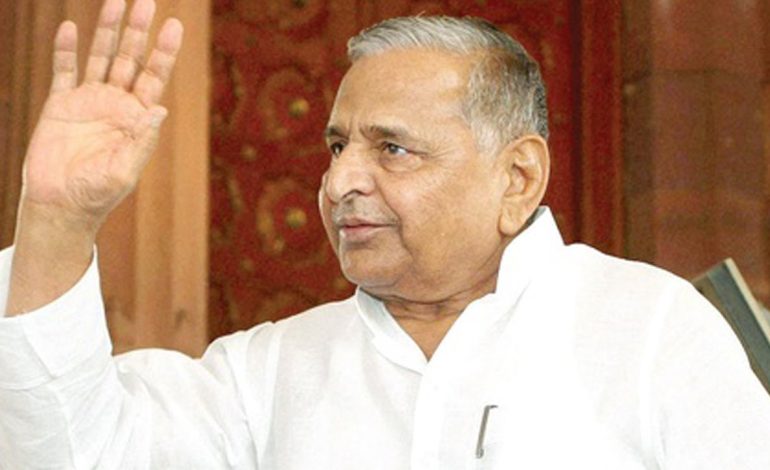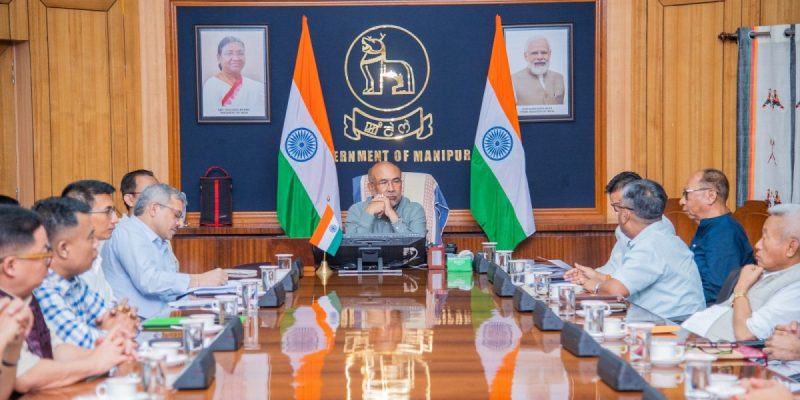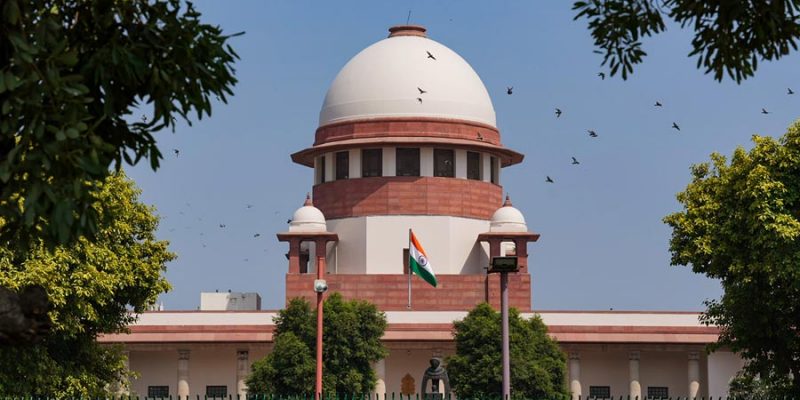Mulayam Singh Yadav: A Formidable Force Against Hindutva Politics

Lucknow: Socialist leader Mulayam Singh Yadav transformed the landscape of Uttar Pradesh politics towards the close of the 1980s.
Known by his party members and supporters as ‘Netaji’, the Samajwadi Party founder was a champion of Mandal politics and worked hard to bring varied marginalised communities under one fold. And although his long political career is chequered with a few blunders, he always fought against the forces of communalism and for the rights of the downtrodden.
Yadav’s entry into Uttar Pradesh politics
Yadav came into the spotlight in 1989 when he became the chief minister of Uttar Pradesh for the first time, beating frontrunner Ajit Singh to the post. He tried many political experiments during his nearly six-decade long political career and while some of these experiments paid dividends, some proved counterproductive.
Veteran journalists who covered Uttar Pradesh politics in the late 1980s and early 1990s believe Yadav’s support for Mandal Commission recommendations made him the tallest standing Other Backwards Classes (OBC) leader in the politically significant state.
He also averted the plan of the Hindu karsevaks to demolish the Babri Masjid in Ayodhya in October 1990. This established Yadav’s credentials among the Muslims and is also said to be one of the reasons that the Congress was uprooted from the state.
Also read: Mulayam Singh Yadav: The Man Whose Forte Was to Battle Against the Odds
Mudit Mathur, a renowned journalist, believes that infighting between two Congress veterans – Veer Bahadur Singh and Narayan Dutt Tewari – proved advantageous for Yadav. Tewari promoted Yadav against Singh from behind the curtain “while Singh’s henchman, Balram Singh Yadav, was the prime challenger of Yadav in Uttar Pradesh’s Itawa district,” Mathur added.
After losing the assembly elections in 1991 to the Bharatiya Janata Party (BJP), Yadav formed and floated his own party, the Samajwadi Party (SP), in 1992. Earlier, he was with Chandra Shekhar’s Janta Dal (Socialist).
An alliance for the marginalised
According to journalist Govind Pant Raju, Yadav changed the political arithmetic by stitching an alliance with Kanshi Ram’s Bahujan Samaj Party (BSP) in 1993. This brought OBCs, Dalits, and Muslims under one umbrella.
“This was the biggest political experiment in the political history of the country,” said Raju. “This alliance showed its strength by defeating the BJP, even amidst a strong wave of Hindutva in the wake of the Babri Masjid demolition in 1993.”
While the alliance stopped the juggernaut of Hindutva, it did not sustain the momentum for long, splitting in 1995. Raju believes that the hubris of BSP founder Kanshi Ram and his relentless demands are what broke the alliance. However, Mathur claims that Yadav, as chief minister, failed to curb atrocities against Dalits, which split the formidable partnership between the rival parties.
Mathur also believes that the saffron leader Brahm Dutt Dwivedi played a significant role in creating a rift between Kanshi Ram and Yadav as the BJP saw an alliance between OBCs and Dalits as a challenge to its ‘kamandal‘ (water pot; frequently used to refer to Hindutva) politics.
Chequered legacy
The BSP withdrew support from the SP government in June 1995. Consequently, irked SP workers attacked BSP leader Mayawati at a guest house in Lucknow where she was allegedly abused and beaten up.
The now infamous guest house case intensified the tensions between the two parties. Subsequently, Yadav’s government fell and Mayawati formed a government with the BJP.
Both journalists, Raju and Mathur, believe that those who created the stir in the guest house were SP’s local workers and that Yadav never endorsed the incident, though Mayawati always blamed him for it.
Senior journalist Sharat Pradhan, recounting the political evolution of the SP patriarch, said, “Mulayam entered politics in the 60s, but he became a mass leader when he started Yadav Politics.”
“He began with the Yadavs and gradually expanded his outreach into other backward castes as well,” Pradhan continued, saying Yadav’s biggest political achievement was taking Muslims into his fold.
According to Pradhan, the Congress’s presence in Uttar Pradesh has been diminishing ever since Yadav stitched an alliance between OBCs and Muslims in 1992 by forming the SP.
However, Yadav’s biggest political blunder was joining hands with BJP turncoat and former chief minister Kalyan Singh in 2009, under whose regime the Babri Masjid was demolished.
Yadav joined hands with hardline saffron leader to win the votes of the ‘Lodhi’ community, but neither did the Lodhis come into his fold, nor did the Mulsims stay with him while Kalyan Singh was in the party.
“Later in 2016, Mulayam himself admitted that joining hands with Kalyan was his mistake,” says Pradhan.
“Even the local police and administration were not with Yadav in 1990,” said Suman Gupta, noting that they tactfully did not tackle the brewing communal situation and thus, Karsevaks were able to get near the Masjid premises. “But Yadav stood firmly against communalism and averted all attempts at demolition between October 10 and November 02, 1990, using the central forces.”
Also read: Babri Masjid: The Timeline of a Demolition
Further, Gupta noted that the guest house incident was a “spontaneous incident”. “Yadav was in a party meeting, and he was not aware of what was happening in the guest house,” he added.
According to Husain Afsar, a well-known Urdu journalist, Yadav proved himself as a strong administrator in 1990, but his secular credentials were dented when he gave shelter to veteran saffron leader Kalyan Singh. However, Afsar believes that the Congress graph dips because of its own blunders, not because of Yadav.
“The secular vote shifted to SP as Muslims were annoyed with the century-old party due to the unlocking of Babri Masjid,” Afsar added.
Political commentators describe the SP founder as a tall OBC leader who created many obstacles for communal forces in his early phase of political life. However, he made some blunders, and as a consequence, the SP, which bagged 36 Lok Sabha seats in 2004, fell to 23 seats in 2009.







